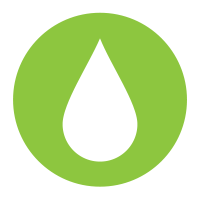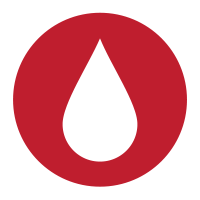
Current filter:
The Regional Council is working with farmers and community groups to improve the health of our local rivers and lakes. We aim to reduce nutrient levels, such as nitrogen and phosphorus, in the Makaroro catchment. Specific targets for the catchment have been set in the Tukituki Catchment Plan (PC6).
We have developed dashboards for all the Tukituki sub catchments to help landowners find out about the ecosystem health of their sub-catchment, and identify whether they require a resource consent.
If you have any questions about resource consents, please contact one of our Consent Advisors – 06 833 8090, email: consentadvisor@hbrc.govt.nz
The targets featured in this dashboard are the most relevant to the Makaroro catchment, and these are catchment scale targets, not national ones. See LAWA for national targets. In accordance with national guidance E. coli, DIN and DRP data are collected monthly, and macroinvertebrates are collected annually.
 Pass
Pass
 Fail
Fail
 No Plan Target
No Plan Target
These are determined using a 5 year rolling average of values. But red/green shaded areas on the graphs are used to put individual values/samples into context - if the majority of samples are in red then the site will fail to meet the plan target.
 >= 120
>= 120
 < 120
< 120
 Checked Data
Checked Data
 Unchecked Data
Unchecked Data
Rolling average: 121.667
Aquatic macroinvertebrate communities are at the centre of aquatic food webs, and link the energy of the sun to fish and birds. They respond to a combination of water quality, habitat (including river flow), and climate.
We report upon macroinvertebrates by calculating the Macroinvertebrate Community Index (MCI). The MCI assigns a score to each species or taxon (1 to 10), based on its tolerance or sensitivity to organic pollution, and then calculates the average score of all taxa present at a site. Increases in MCI are generally considered to be good.

 < 260
< 260
 >= 260
>= 260
 Checked Data
Checked Data
 Unchecked Data
Unchecked Data
Rolling median: 10 E. coli/100ml
We use E. coli as an indicator of faecal contamination from warm blooded animals. Not all strains of E. coli are hazardous; however, high concentrations suggest that other pathogens maybe present.
River flow has a strong influence on water quality and ecology. High flows are associated with increased sediment loading and associated contaminants.

 < 0.15mg/L
< 0.15mg/L
 >= 0.15mg/L
>= 0.15mg/L
 Checked Data
Checked Data
 Unchecked Data
Unchecked Data
Rolling average: 0.076mg/L
An essential element for plant growth but elevated levels can lead to excessive plant and algal growth with associated problems. It is readily transformed between soluble and insoluble forms. The graph represents changes in Dissolved Inorganic Nitrogen (DIN) which is the form of nitrogen available for aquatic plant and algae growth. The Tukituki Catchment Plan has set a limit of 0.8 mg/L for the Makaroro Catchment.

 < 0.004mg/L
< 0.004mg/L
 >= 0.004mg/L
>= 0.004mg/L
 Checked Data
Checked Data
 Unchecked Data
Unchecked Data
Rolling average: 0.006mg/L
We measure a particular form of phosphorous - Dissolved Reactive Phosphorous (DRP) because this is the only form available for aquatic plant and algae growth. Phosphorous is an essential element for plant growth but elevated levels can led to excessive plant or algal growth with associated problems. Over time, phosphate bound to sediment (soil particles in the water) dissolves and becomes DRP.

 <= 4.1NTU
<= 4.1NTU
 > 4.1NTU
> 4.1NTU
 Checked Data
Checked Data
 Unchecked Data
Unchecked Data
Rolling median: 8.45mg/L - NB the calculated median is calculated from both FNU and NTU data, so should be treated with caution.
Increases in turbidity are associated with elevated sediment loading which is often caused by erosion. River flow has a strong influence on turbidity and other aspects of water quality. High flows are associated with increased sediment loading and associated contaminants. The relationship between turbidity and rainfall/river flow is a complex one. During heavy rain solids are washed into the stream but there is also more dilution. Compared to large powerful rivers like the Tukituki, the fine sediment and organic matter is more likely to settle on the bed of the Makaroro. Sedimentation reduces habitat quality, and limits the type of animals that can live in the waterways.

Values displayed on this page are from automated calculations. They are intended as a guide only. Please seek confirmation from the regional council for verified values needed for consent or compliance purposes.
Disclaimers and Copyright
While every endeavour has been taken by the Hawke's Bay Regional Council to ensure that the information on this website is
accurate and up to date, Hawke's Bay Regional Council shall not be liable for any loss suffered through the use, directly or indirectly, of information on this website. Information contained has been assembled in good faith.
Some of the information available in this site is from the New Zealand Public domain and supplied by relevant
government agencies. Hawke's Bay Regional Council cannot accept any liability for its accuracy or content.
Portions of the information and material on this site, including data, pages, documents, online
graphics and images are protected by copyright, unless specifically notified to the contrary. Externally sourced
information or material is copyright to the respective provider.
© Hawke's Bay Regional Council - www.hbrc.govt.nz / +64 6 835 9200 / info@hbrc.govt.nz